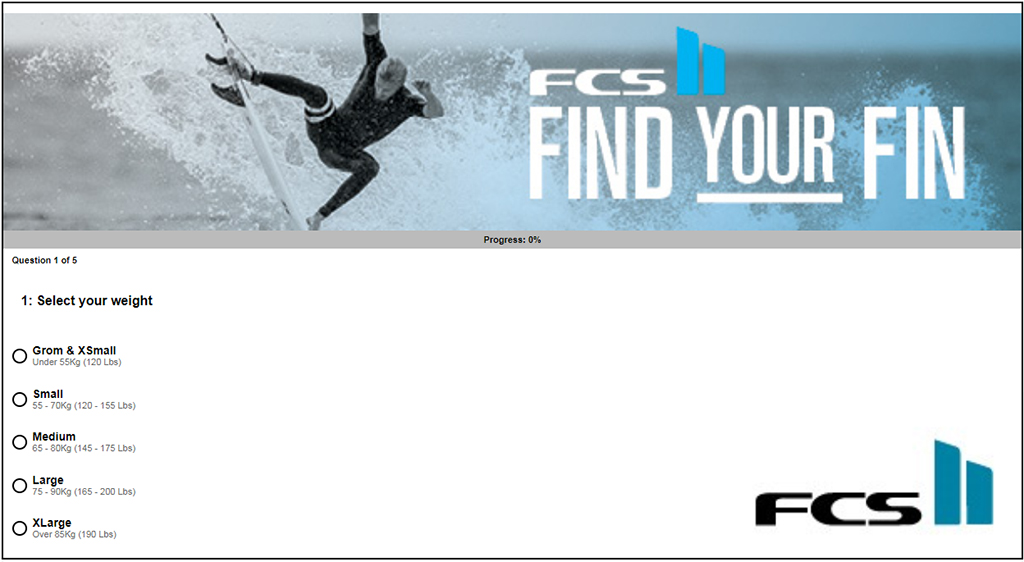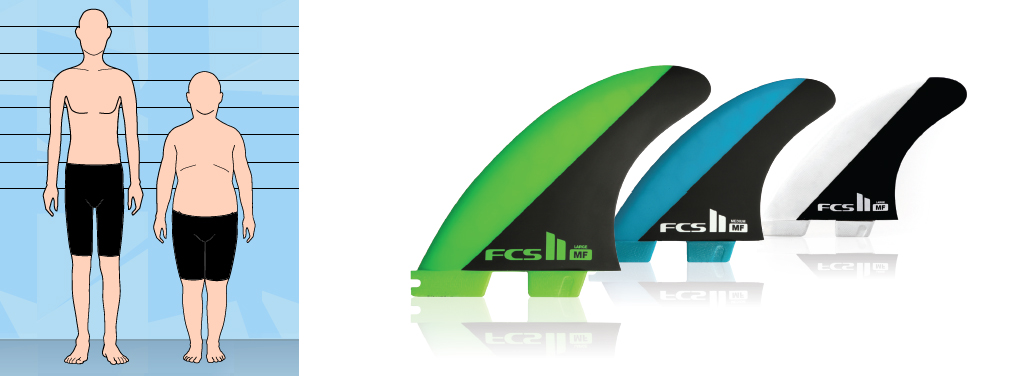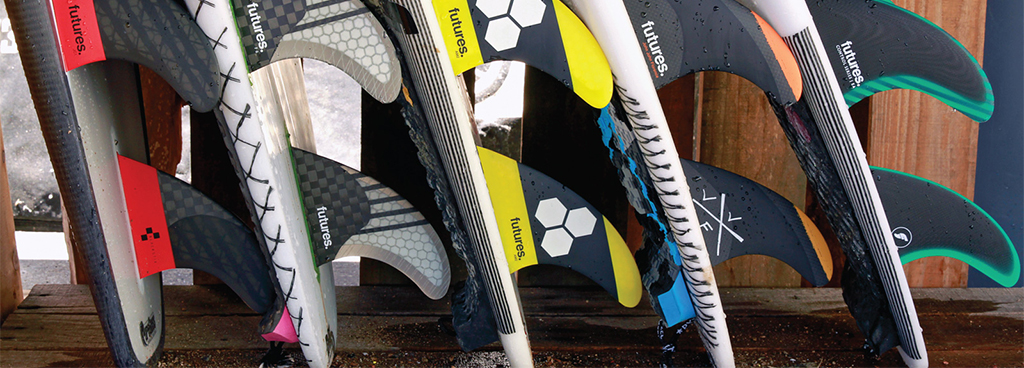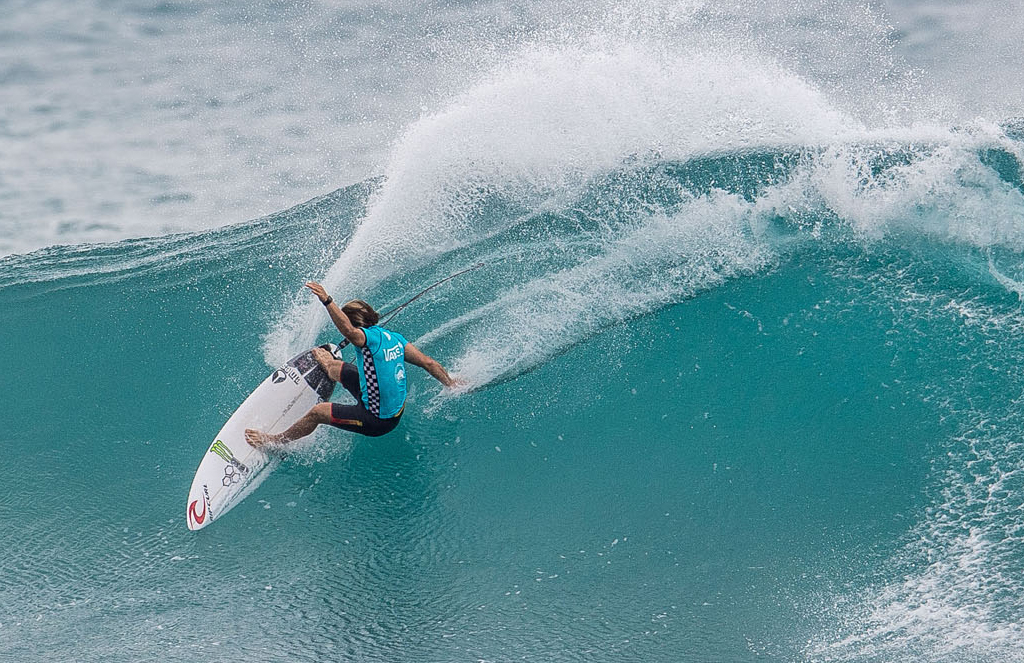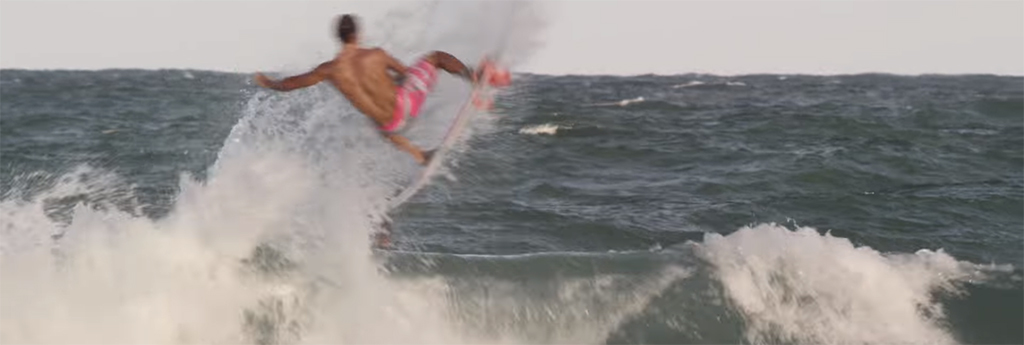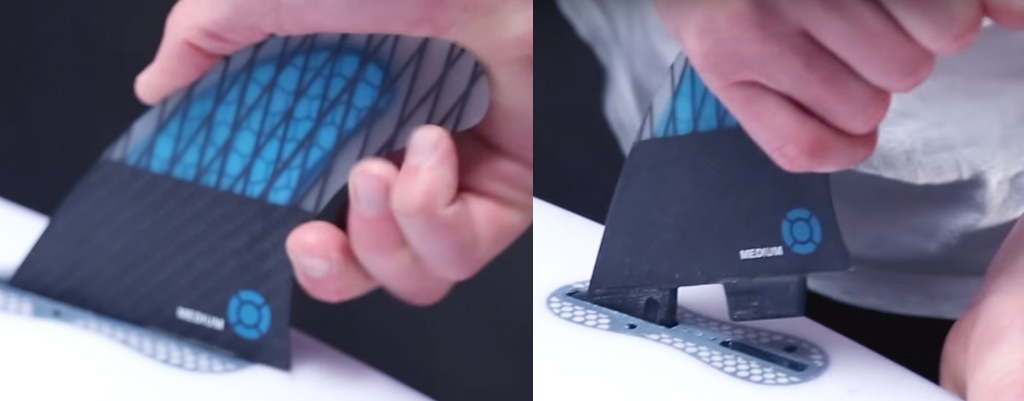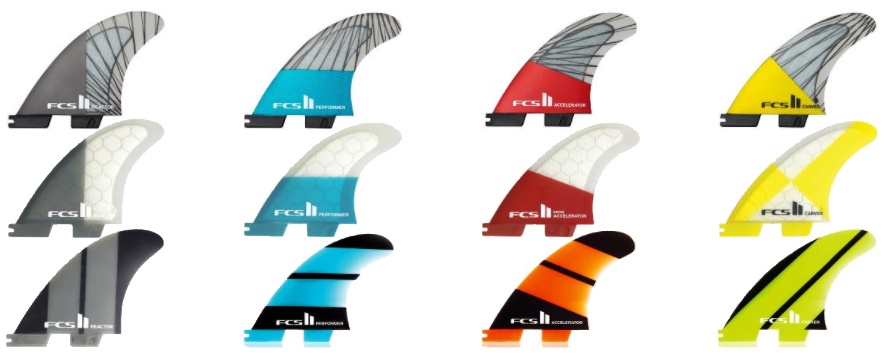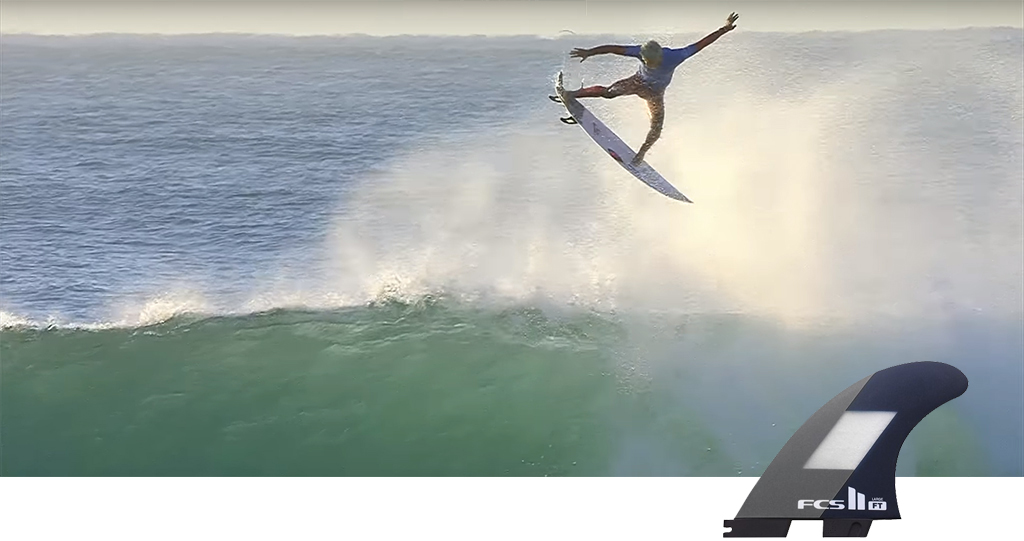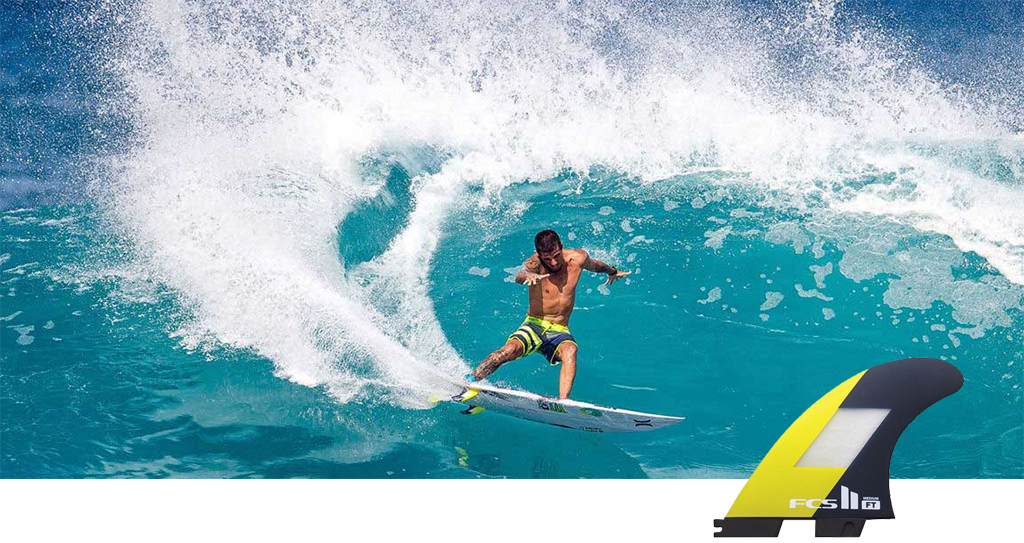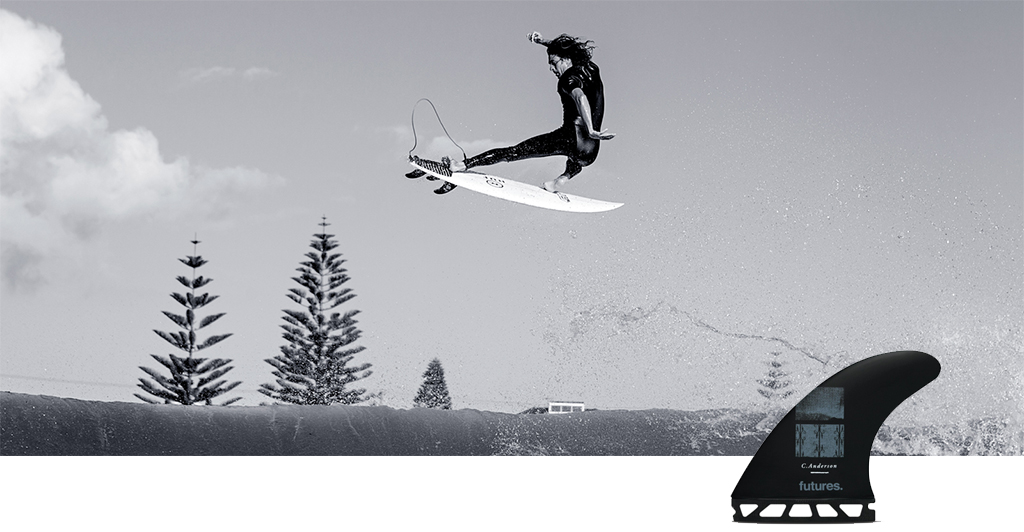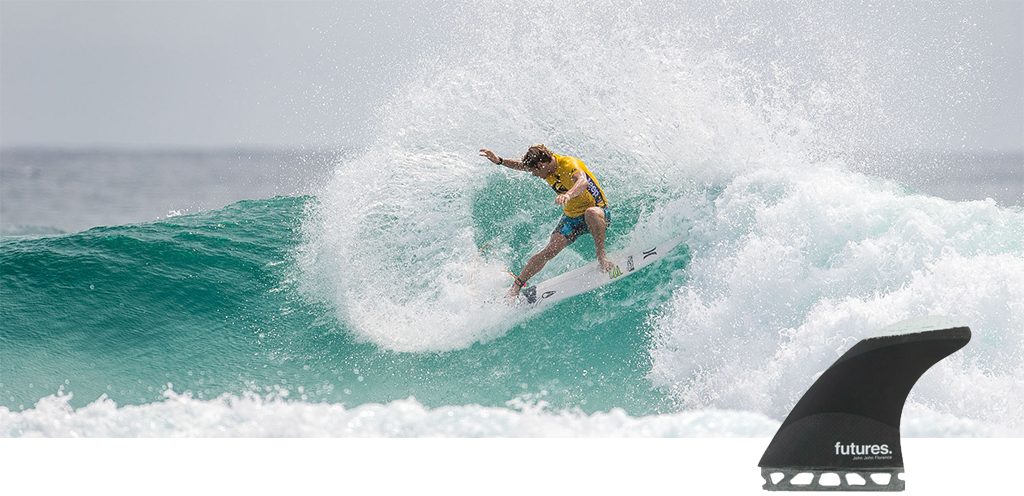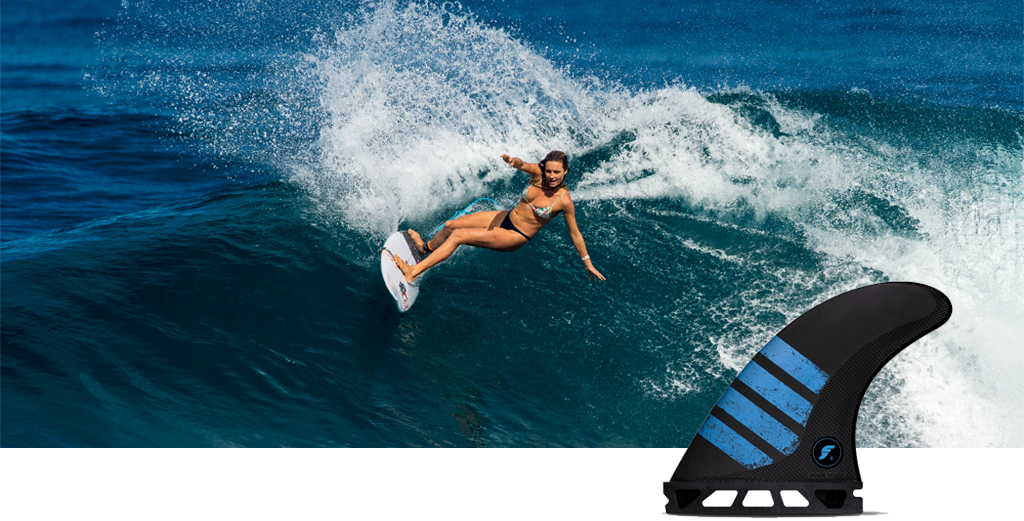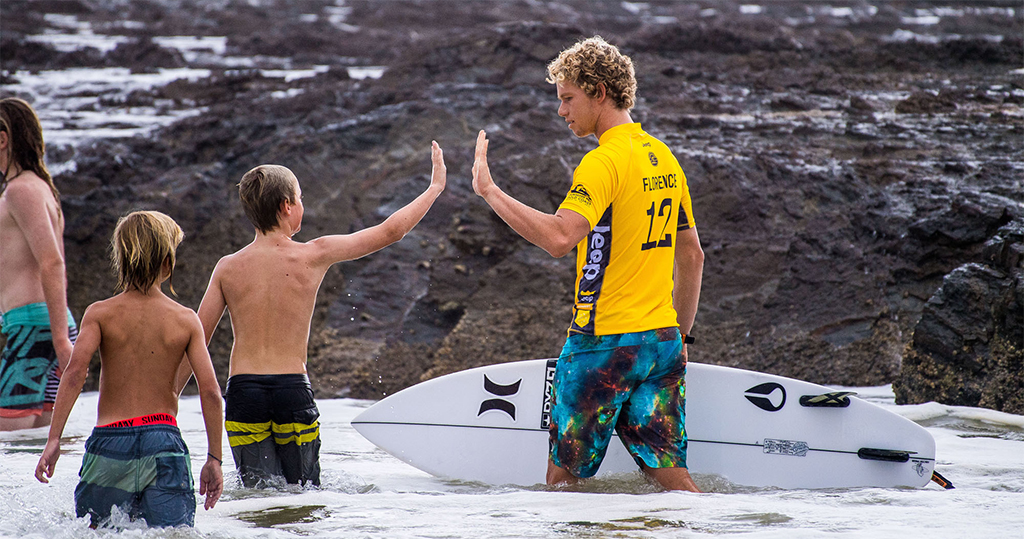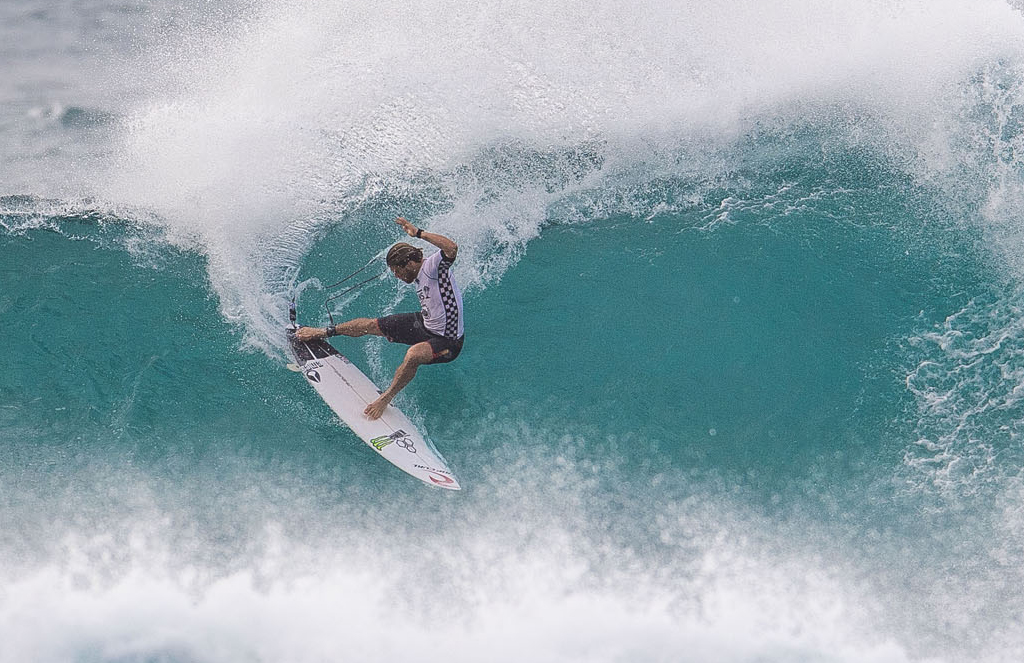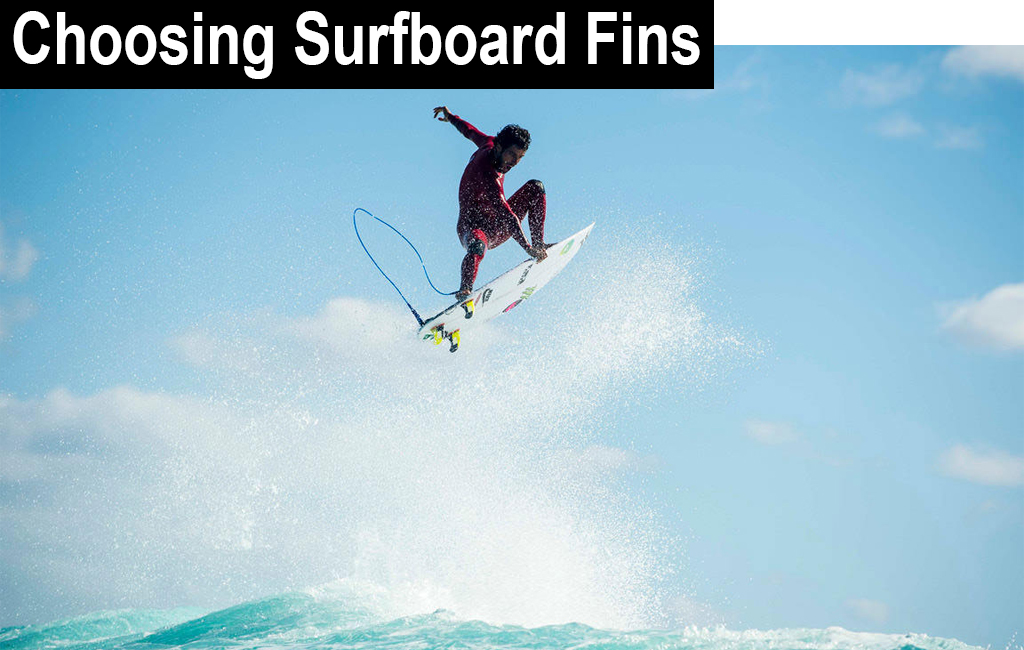
Choosing Surfboard Fins
As an Intermediate and Advanced surfer, Choosing Surfboard Fins takes on a new dynamic. You are no longer riding on the wave, letting fins steer you as you get pushed along. Fins are a critical to how you engage with the wave, essential to your speed, control and performance.
All performance fins are not alike. Not all work optimally in all waves, not all work optimally in all boards. There’s fins that favour certain approaches such as power carving or progressive surfing. So how will you find what works for you?
For 2021
It’s interesting to see the different approach of FCS and Futures to fin development. FCS has brought to market a new fin series, the H Series. It represents not new but an evolution in design and new manufacturing. The design, upright and slightly raked, still looks very similar to a traditional fin. With the side fin the tip is squared off. The centre fin is more elliptical, not curving in as much on the rear trailing edge. The fins have traditional thickness at the base tapering to a much finer tip. Manufacturing involves an external carbon machined layer finished to exact dimensions and tolerances.
In terms of performance the fins are designed to be fast and responsive. The shape gives speed while the tapered foil is said to aid in rail to rail surfing so that as you turn the fin loads up then releases energy in your change of direction. This loading up and releasing is done with control, so you don’t get erratic springs and recoils. Feedback is that the fins are fast, with control. However fine tuning is recommended with the rear centre fin to be a size smaller. So if you ride a M size set, match it to an S size rear fin. The FCS H Series is said to offer advantages in all wave types.
On the left the FCS H4 fin is a new series. The shape is an evolution of existing fin templates with a uni-directional carbon layer. Performance is said to be fast with control. On the right the Future Fins Vapor Core construction on their Legacy series fins. Vapor Core construction consists of pre-tensioned carbon acting as an exo-skeleton. So the fins are hollow. Performance is said to be fast, instantaneous with control
Futures has brought to market a new construction process called Vapor Core. To make the fins as responsive and dynamic as possible, pre-tensioned carbon is layed up. Usually laid over foam, to make the fin ultra light there’s no core at all. The fins are hollow. This construction is applied to Futures existing fin models so you can get any of their proven Legacy series in Vapor Core. For example if you want a fin with drive you’d go for the Vapor Core Rake model. A fin to aid more top to bottom surfing would be the Vapor Core Pivot. They’re available in the standard Future sizes. So the foil, shape, size of the fin is as you’ve been used to.
You can take your favourite fins and then get them in the Vapor Core construction. Feedback is that the Vapor Core is fast and noticeably responsive. Part of this may be due to light weight as the carbon is described as an exoskeleton over air. Using your favourite existing Legacy fin models in Vapor Core means you’ll have the performance improvement immediately available in your existing surfing, rather than having to master a new fin design.
Brand Approach
Let’s look at how the established fin brands approach giving you the best surfboard fins.
Weight Your Starting Point?
Both FCS and Futures advise using your weight as a starting point to determine your fin choice.
Here’s the weight-size numbers:
- Small | FCS 55-70kg | Futures 47-70kg
- Medium | FCS 65-80kg | Futures 65-88kg
- FCS | Large 75-90kg | Futures 80+kg
Using weight as such a determining factor in your fin choice is one of the biggest pitfalls.
The terms Small, Medium and Large are confusingly used to refer to three things: your weight, body size, and fin size.
This leads to the common idea that if you’re say a Small weight surfer you should surf a Small sized fin. This is not what you should do.
Kelly Slater, 11 times World Champion, a Small surfer by weight and body type, says he surfs a Larger fin when the waves are small and weak. As a fin that has more area generates more power from the wave. In getting optimal fins your weight is not the major consideration.
While we’re talking about sizes, another misconception is that big waves need big surfboard fins. In bigger surf many elite surfers, including Kelly again, ride fins with less area. So performing in big surf does not automatically equate to big fins.
These two body types may have the same weight but don’t fit the Small Medium Large weight categorisation. One surfer will be light on their feet the other heavy footed creating different fin needs
Another aspect not addressed by simply using weight is body-type. Short stockier surfers have performed well on wide stiff base fins with thinner tips. Taller or leaner surfers perform well on taller fins with more tip. Centre of gravity, the leverage you put on a fin, heaviness of foot, your stance whether wide or narrow, all play a part in how a fin will help you perform.
Different fins perform optimally in different design boards. Note tail thickness left to right. The thickest tail has the highest Futures Ride Number and flexiest fin, to thinnest tail with lowest Ride Number and carving fin
Other factors to consider are that different fins work optimally in different surfboards. FCS actually provide a recommendation so you can match their fins to your board. Tail thickness makes a big difference on how fins feel too. If you’ve got a thicker tail, flexi fins will help bite reducing that skipping feeling. If you’ve a thin tail stiff fins flex under the more direct pressure, giving better engagement.
Using your rail allows use of a smaller fin setup making for more responsive overall performance
Do you turn from the tail, you may favour a bigger fin. Or use your board rail? Rail surfing can allow you to use smaller surfboard fins that allow overall more responsive surfing.
The above points should give some indication of the scope of fin considerations to progress your surfing. It’s more than picking your weight, the latest fin model, and colour.
Explore & Experiment
Experimentation takes work. Julian Wilson in the blur of testing in amongst the slop. You need to work hard to determine what’ll work best – even when conditions are far from optimum
Two key things you can do to make an informed decision on how your fin choice can improve your surfing are to explore and experiment.
Explore. Check elite level WSL surfers close to your body type, that you also like the way they surf, and explore what fin setups they’re using.
Experiment. Try lots of fins. Kelly’s signature fins have a larger side and smaller rear fin. How did he know this would optimise and fit his surfing style? Experimentation takes time. You have to work through swapping surfboard fins, in different conditions, at different breaks, on different boards. It pays off when you come up with the combination and your surfing potential is unleashed.
FCS II makes it super easy to experiment, swapping fins in and out instantly without needing a fin key or any tool
Both FCS and Futures aid experimentation. The FCS II setup is screwless so it’s super easy to instantly switch fins. It’s all done by hand with no tool or fin key needed. Futures has a screw which means you need to mess with a fin key. The Futures Ride Number though gives a good indication of fin characteristics so it’s easy to work out how a fin will perform even before you try it.
FCS – Surfboard Fins Choice By Wave Type
The core FCS II range appears as a confusing array of colours. In the top row there’s four Essential models designed to maximise your performance in four surf conditions. Reactor | Performer | Accelerator | Carver. The three rows with different graphics represent differing constructions of those same fins
FCS use wave type to categorise its four core Essential FCS II models. They have a short movie showing WSL surfer Matt Wilkinson touring the world surfing four great locations using his FCS II fins to optimise his performance at each break.
The four wave types, recommended fin, and board type are:
- Beach Breaks | Reactor Fin | Speed and tight turns | For performance shortboards with moderate-to-low rocker
- All Surf Conditions | Performer | Balanced speed, flow and response | For all board types
- Sucky, Critical Overhead Conditions | Accelerator | Speed, flow and response | For all board types
- Open Face, Reef and Points Breaks, Down-the-Line Waves | Carver | Powerful drawn out turns | For deep concaves and boards with extreme rocker
FCS offer its models in 3 different constructions: PC Carbon, PC Core and Neo Glass. In the image above the constructions are identified by different graphic design. So how do the materials affect the way the fin performs? This is far from clear as all constructions are described as ‘responsive’. PC Carbon is said to offer advanced flex.
Without listing all the measurements, only a few millimeters separate these Essential FCS II fin models in base and height while there’s a greater difference in area and in sweep.
Does Rake or Sweep Get A Mention?
When you’ve gone to select fins how often do you consider Rake or Sweep? Are they mentioned? If all other things are equal Rake and Sweep make a big difference to how a fin will help you surf
What do the Rake and Sweep numbers mean? Rake and sweep are not identical but have a similar effect on how a fin helps you surf. Less Rake-Sweep helps you do more pivot turns. More Rake helps you do down the line carves. The FCS II Reactor at 31 degrees gives you less Sweep, helping top to bottom surfing. The FCS II Carver at 37 degrees gives you the most Sweep, helping down-the-line surfing.
Explore FCS Fins With Your Favourite Surfers
If you happen to be the same body type as Filipe Toledo you could explore what he uses. For example at a down-the line-break like Jeffrey’s Bay, what did he ride?
Filipe Toledo’s performance on his FCS II signature fins at Jeffreys Bay 2017 was mind blowing. But how did he come up with the idea of an 80/20 foil for his side fins?
Filipe’s Jeffreys Bay 2017 performance was mind blowing from both a carving and progressive perspective. He rode his signature fins, that he says he designed as a blend between the FCS Performer and Mick Fanning’s fin.
So Filipe, and FCS Team Rider, didn’t go for the FCS II Carver fin recommended for down-the-line waves at Jeffreys Bay a down-the-line break. He rode his signature fin to surf the way he wanted, to maximise his potential. He did carve down the line at times but what gave him a critical performance advantage was his top to bottom and air game, in waves where his competitors were mostly carving.
So relying on what the fin company might tell you about a fin isn’t going to necessarily help you find your best fin, nor maximise your unique potential.
Short arc turn. Filipe’s signature fins aren’t only fast or for an air game, they help power arc turns too. So Filipe worked out what type of fin helps him surf the way he wants, not the way the waves dictate
Traditional fin foils circled from left to right: Flat foil | Inside foil | 50/50 foil | 80/20 foil. Filipe uses an 80/20 foil, found on rear Quad fins, on his front signature thruster fins
One of the most interesting aspects of Filipe’s signature fin is that his side fins don’t have the usual FCS foil. They have an 80/20 foil normally used on Quad rear fins to provide speed and stability. That’s exactly how they helped Filipe surf.
There’s no question FCS fins work great, their Team and many riders on the WSL prove that. So how did Filipe come up with the fin design to maximise his personal performance? Experimenting.
Futures – Fin Choice By ‘What Do You Want To Do?’
Do you want to generate speed? Go for a Ride Number higher than 6. Want to control your speed go for a Ride Number 4 or lower
Futures has a different approach than FCS. They don’t put their fins up into categories by wave type. They have a number that indicates how a fin will help you surf. What do you want to do? Do you want to generate speed? Do you want to control speed?
All the complex characteristics including flex, base, height, rake, sweep, area, are captured and summed up in Futures Ride Number. So you get an easy to understand number from 10 to 1. A 10 fin is great at helping you generate speed. When it carves it carves with the wave. A 1 fin helps you control speed, when you’ve got power or suckiness on tap. When it carves it carves through the wave.
From the outset this approach helps you understand how a fin will help your surfing just by knowing its Ride Number. As an example let’s compare how FCS and Futures would select a fin for a down-the-line wave. As mentioned above, FCS recommend the FCS II Carver for open face, down-the-line waves.
If this is a down-the-line wave, does the wave determine what fins you’ll use? Or do you determine how you want to surf the wave and select the fins to help you do that?
Futures don’t start with the wave. Futures start with you. Do you want to generate speed on that down-the-line wave or control the speed? A high Ride Number of say 9 will help you generate speed so instead of drawn out carving turns you could surf top to bottom or go air.
Alternatively a speed controlling fin with a low Ride Number of say 4 would help you do drivey surfing.
The hardest part of the Ride Number is working out what Ride Number to start with that suits you. Once you work that out it’s easy to experiment going up and down the Ride Number scale to match how you want to perform.
Explore Futures Fins With Your Favourite Surfer
Craig Anderson’s signature Futures fins with a Ride Number of 9.8 help you generate speed wherever you want
Good examples of Futures Ride Number to explore are surfers Craig Anderson and John John Florence. Both are progressive, both carve.
Craig’s surfing is characterised by spontaneous airs. His signature fin has a Ride Number of 9.8, it is very good at generating speed giving him pop almost on call. He still does carving moves but more in flow with the wave.
John’s signature Futures fins with a Ride Number of 4.0 help give you control for power moves. While John does big air too, he goes with a more planned approach controlling speed and power
John’s surfing is characterised by power moves. His signature fins have a Ride Number of 4.0. He carves through the wave. John put on an unbelievable demonstration of power surfing at Margaret River in 2017. John still executes progressive big air moves too but with a more planned approach.
Futures has a range of construction methods and materials, but all these characteristics are incorporated into the Ride Number. You can choose Ride Number first then try to work out what fin construction to go for.
Futures Alpha Material Surfboard Fins
It’s worth a note that Future’s Alpha material opens a whole new world of surfboard fins design and should definitely be on your experimentation list. Alpha allows construction like nothing previous being able to vary any aspect of the fin. The Alpha multi-texture surface is another great feature reducing cavitation and increasing speed. John John Florence has an Alpha fin in addition to his original signature version.
Futures Alpha fins come with Ride Numbers of 5-6, in the middle of the Ride Number range indicating they help you with good all-round surfing. Check Alana Blanchard with a nice carve. Not too wide, not too short, a great balance of speed and control
Surfboard Fins Summary
In Summary fin exploration and experimentation are vital for your surfing performance and progression. Both FCS and Futures have great fins. Helping you choose the best fin, FCS focus on wave type, the waves you surf. Futures focus on what you want to do on the wave.
John John explored, experimented, determined how he wanted to surf across the vastly different surf conditions of two years on the World Tour and chose his own Futures signature fins to help him do it. The result, two World Championships
Filipe and John are examples of surfers who just didn’t take the brand narrative but explored, experimented and designed their own signature fins. They determined how they wanted to surf, and perform consistently, across vastly differing surf conditions and they chose the fins to help them do it.
Do your own exploration and experimentation, work out how you want to perform so you can get the fins that’ll help you progress your own surfing potential.
Check our range of fins at Manly Surfboards>Surfboard Fins
Addendum – Choosing Surfboard Fins
Both FCS and Futures have taken a lot of the complexity out of choosing fins with their wave-suited models and Ride Number. It’s still good to know the underlying features that make a fin perform.
Without going into too much detail-
- Template refers to the shape of the fin, so it can be used to describe a set of characteristics such as height, base, area, and shape
- Base refers to the bottom length of the fin. The longer or wider the base, the more drive and direction the fin will give you
- Height. The taller a fin the more hold it will give. Fins that are tall normally have less base so you get flex so you can turn
- Area is a basic indicator of fin drive. So more area equates to more drive
- Flex is the amount a fin bends. Flex is important but too much or too little are not good
- Rake and sweep describe the amount of uprightness in a fin. So the more upright the more sharply you can turn. The less upright the more a fin will direct you down the line
- Foil. This refers to the treatment of fin thickness and the way it transitions around the fin. So a foil can be a curve, it can be flat, or have a special treatment such as a vee, concave or convex. Each gives certain performance and feel.
- Weight is relatively important. If you are surfing in small waves having light fins does give you a dynamic feel. However heavier fins that drive will also give you a dynamic feel
- More complex characteristics such as Toe and Cant refer to the angles your fins have in relation to your board
Explore. Experiment. Find the fin setup to maximise your unique potential and performance!



